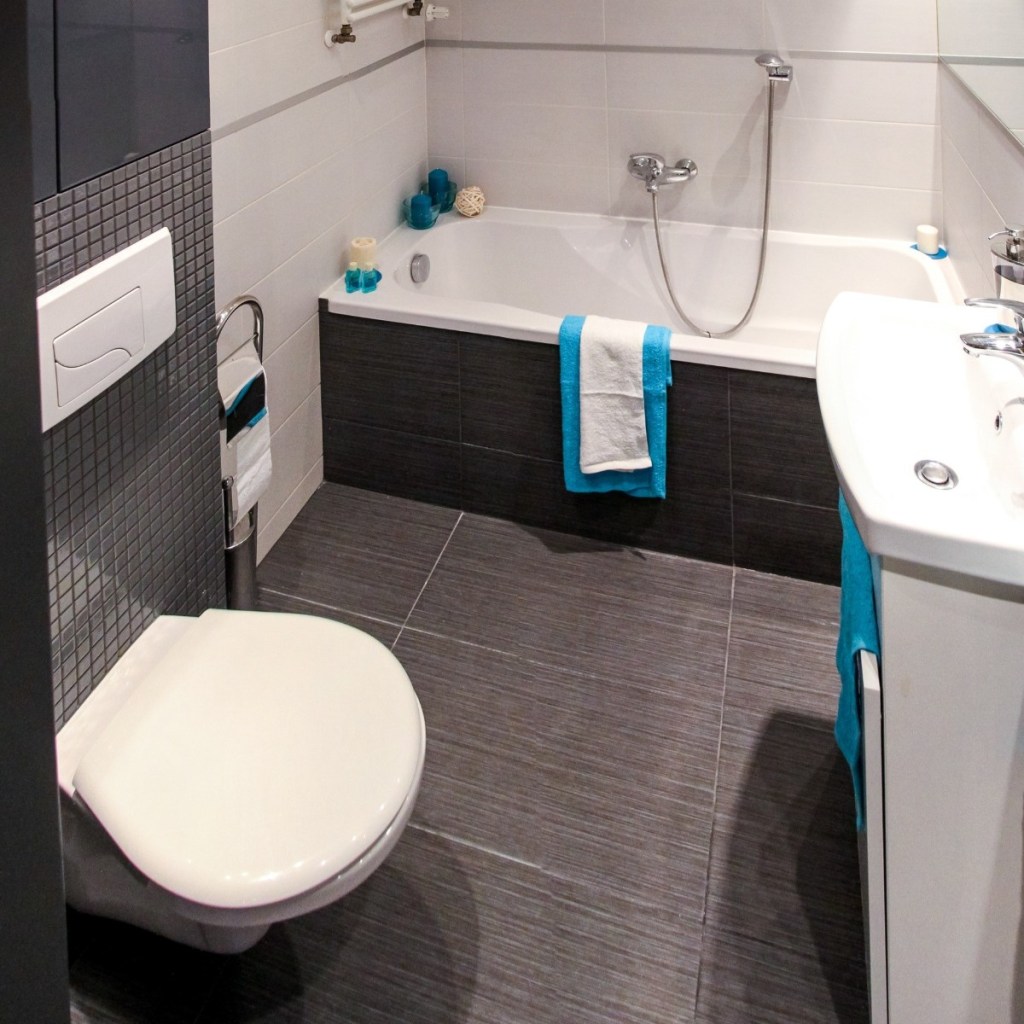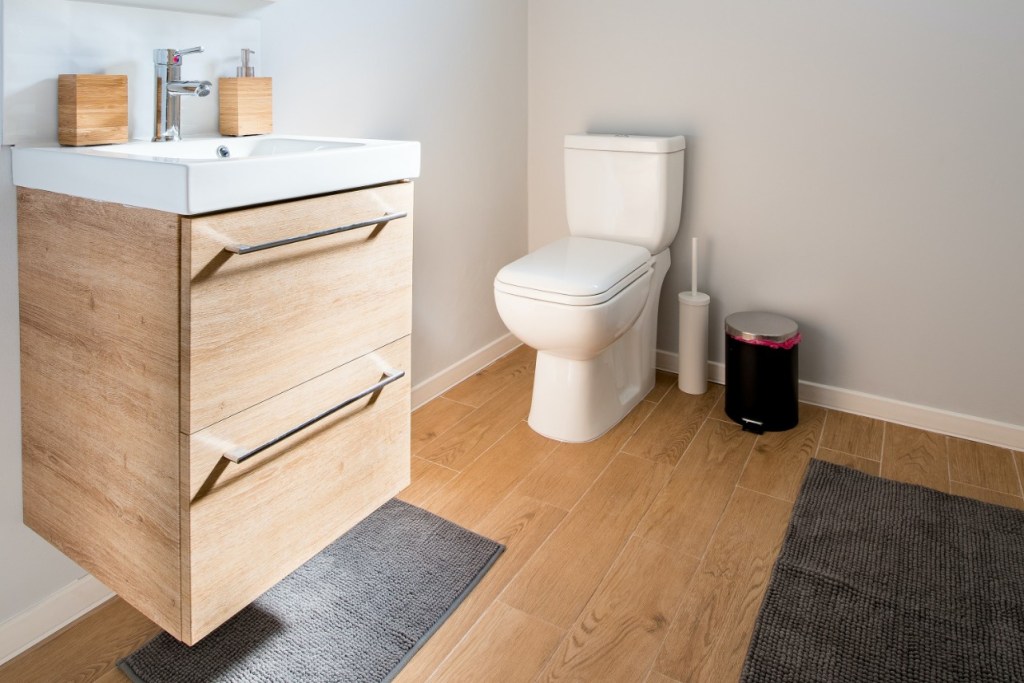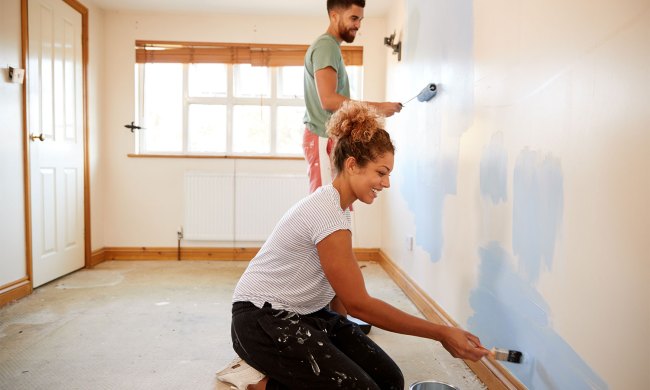When your toilet is starting to wobble, it can be a frustrating situation. A rocking toilet is not only inconvenient to sit on, but it can also lead to serious issues like cracked drainpipes, water leaks, escaping sewer vapors, and dangerous mold growth that can damage your floor or make your bathroom a very unpleasant place to be. Before you call the plumber, though, we’re going to talk about some ways you can fix a wobbly toilet on your own. But first, let’s familiarize ourselves with the inside of the toilet.

Anatomy of your toilet
Most new toilets are installed with the same parts and constructed in the same way across the board. The drainpipe in the floor connects to the flange, which is a ring made of metal or PVC material. A wax or rubber ring is then placed around the flange to provide a seal that stops water and sewer vapors from seeping out. The base of the toilet is placed on top of the seal and the base and secured with two bolt screws on either side of the base.
Now that you have a picture of the inner workings of your toilet, we can discuss some common causes of a wobbly toilet.

Why is your toilet rocking?
When your toilet is wobbly, it means that the bottom of the toilet is not exactly flush against the floor of the bathroom. If this issue is not addressed, you may start to see leaking around the base of your toilet, or you may even start to smell some very foul odors in your bathroom.
Several culprits can cause a rocking toilet issue, and each of them requires a different fix. So, let’s take a look at why your toilet might be rocking.

Loose or broken bolt screws
This is probably the easiest issue to fix on a rocking toilet. If a bolt screw on the base of the toilet is loose or damaged, it is likely not securing the toilet base to the floor as well as it should be.
Step 1: Check the bolt screws on either side of the toilet’s base to see if either the bolts or their washers look warped or loose.
Step 2: You can tighten them if they’re loose, or you can replace them with new screws and washers if they appear damaged.

Malfunctioning flange
If the flange under the toilet is warped, broken, or significantly raised above the floor’s surface, this can cause the base of the toilet to raise up in the middle and tilt to either side. To replace the flange or even repair it with a flange repair kit, you’ll first need to pull out the flange bolts and remove the toilet from its spot.
Step 1: First, shut off the water valve under the toilet so that water doesn't spill onto the floor.
Step 2: Then, remove all water from the tank and toilet bowl by flushing the toilet until it's fairly empty. You may want to use a water solidifier for any remaining water in the bowl so that it doesn't slosh out while you're moving it.
Step 3: Disconnect the water supply line from the toilet tank using a wrench.
Step 4: After pulling off the bolt caps on the toilet's base, use an adjustable wrench to remove the bolts that are securing the toilet to the floor.
Step 5: Place a towel or blanket on the floor to rest the toilet on.
Step 6: Lift the toilet and place it aside on the towel.
Step 7: Unscrew the flange from the drainpipe and replace it with a new one or repair it with a kit.

Damaged wax seal
The wax seal under your toilet can deteriorate or corrode over time, which could cause your toilet to rock. If you see discoloration around the rim of your toilet’s base that's making this one of the grossest areas of your bathroom to clean, your wax seal is likely the culprit.
Step 1: Follow the above instructions again for removing the toilet and set it aside.
Step 2: Locate the wax ring and pull it of its spot. You may have to scrape up the remnants of the wax seal if it has severely deteriorated.
Step 3: Install your new wax ring and be sure it's tight and flush against the flange for proper sealing.

Uneven floor
If the bolts, wax seal, and flange are all intact and free of damage, a likely culprit for your rocking toilet is simply the condition of your bathroom floor. Due to perpetual moisture, certain types of flooring, especially wood, can start to warp, sink, or raise up around your toilet’s base. This creates an uneven surface under the base and creates a gap between the toilet and floor. If you cannot repair the floor just yet, there is an easy solution that will stop your toilet from rocking until you’re ready to redo the floors.
Step 1: Take some shims, or plastic wedges, insert them under the toilet’s base to raise the drooping side and make the fixture level.
Step 2: Since this solution may make the toilet a bit more unsightly, consider caulking around the rim of your toilet’s base to create a more aesthetic appearance.

Is it safe to use a wobbly toilet?
Using a wobbly toilet is not safe and can pose various risks. Since a rocking toilet may indicate loose bolts, damaged seals, or weakened flooring, this may indicate or lead to damage like moisture or even structural issues. Ignoring the problem can exacerbate it, potentially causing the toilet to detach or leak sewage, which poses health hazards, not to mention requiring costly repairs.
Additionally, an unstable toilet poses a safety risk, especially for elderly individuals, children, or those with mobility issues, who may lose balance or fall. That's why it's crucial to address a wobbly toilet promptly by following the steps outlined here or seeking professional assistance to ensure safety and prevent further damage.
A rocking toilet is a solid indicator that something is amiss under your toilet’s base. Whether the issue is a damaged flange or seal, loose bolts, or a warped floorboard, a rocking toilet needs to be addressed quickly. If the job is put off, this could lead to unpleasant leaks, odors, or even additional damage since the rocking motion can crack your flange or even the drain pipe. Err on the side of caution and fix the problem while it’s a small one.




